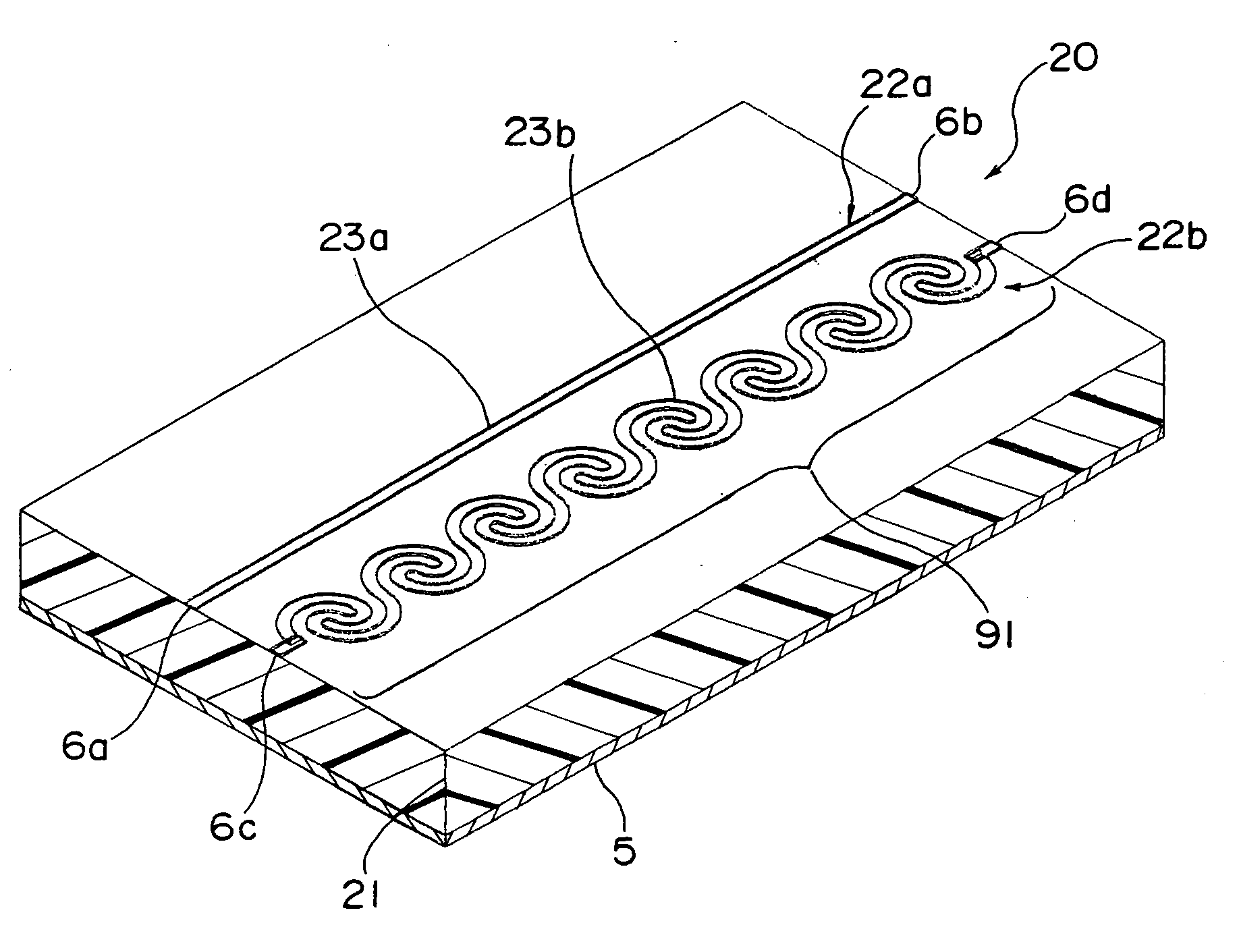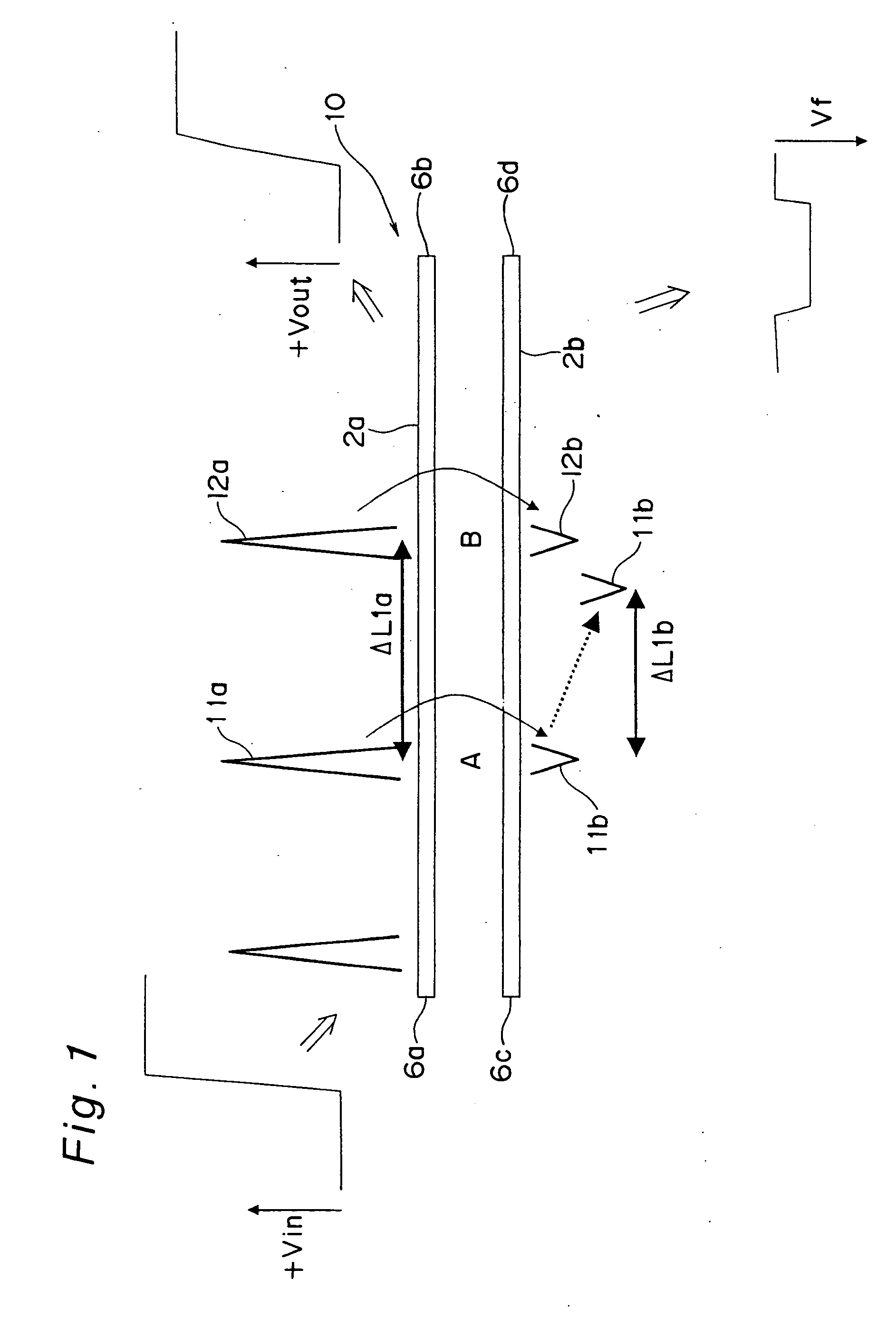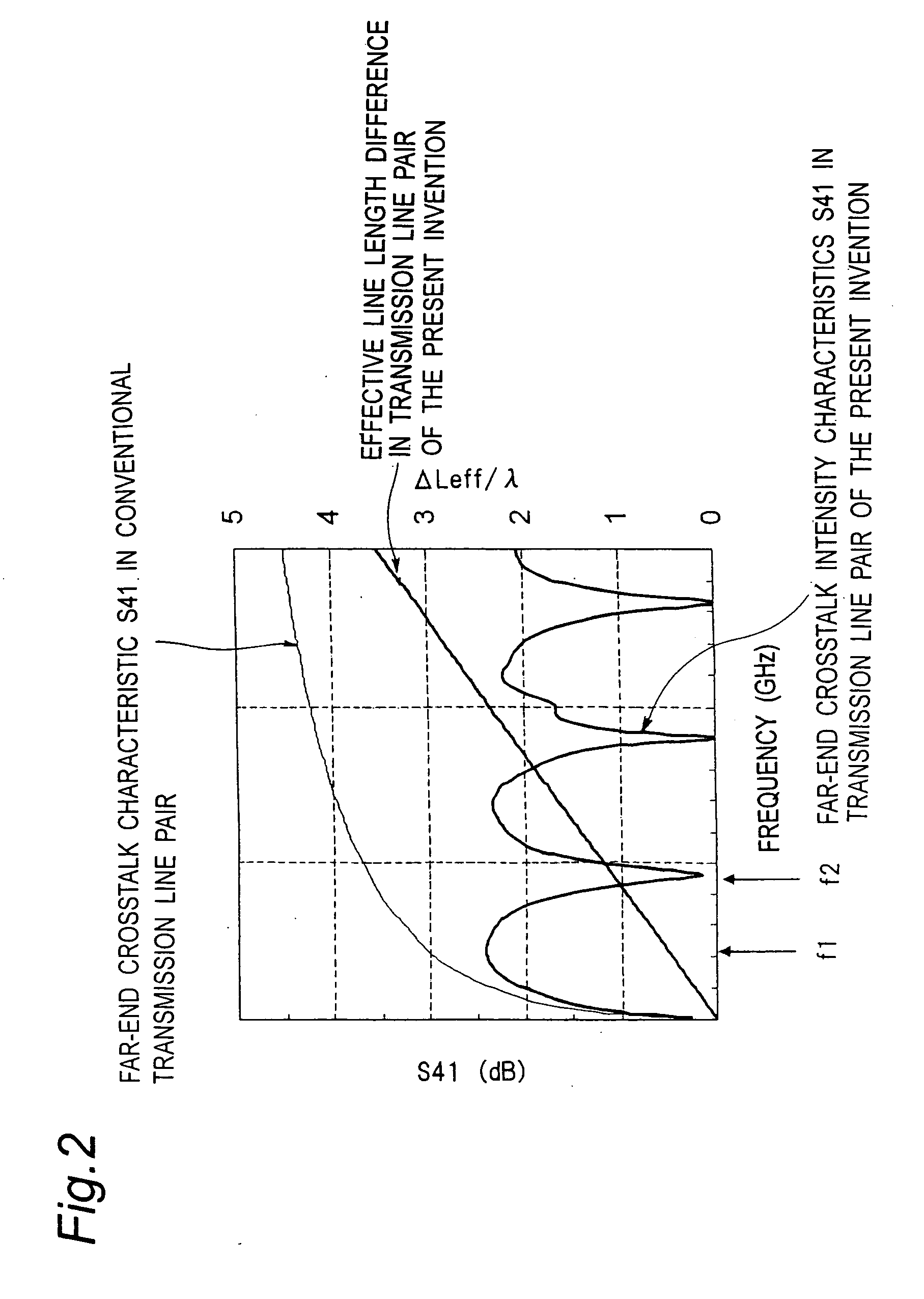Transmission line pair
- Summary
- Abstract
- Description
- Claims
- Application Information
AI Technical Summary
Benefits of technology
Problems solved by technology
Method used
Image
Examples
embodiment
[0114]FIG. 4A shows a schematic perspective view showing the structure of a transmission line pair 20 of this embodiment, and FIG. 4B shows a partly enlarged top view in which the structure of the transmission line pair 20 of FIG. 4A is partly enlarged.
[0115] As shown in FIGS. 4A and 4B, in the transmission line pair 20, a first transmission line 22a includes a first signal conductor 23a formed on a top face of a circuit board 21 and a grounding conductor 5 formed on a rear face of the circuit board 21, while a second transmission line 22b includes a second signal conductor 23b formed on the top face of the circuit board 21 and the grounding conductor 5 formed on the rear face of the circuit board 21. It is noted that the transmission line pair 20 of this embodiment is not limited to such a construction, and instead of such a case, for example, it is also possible that the first transmission line 22a is a differential transmission line pair and the first transmission line 22a does ...
working example 1
[0154] First, as Working Example 1, a signal conductor having a thickness of 20 μm and a wiring width W of 100 μm was formed on a top face of dielectric substrate having a dielectric constant of 3.8 and a total thickness of 250 μm by copper wiring, and a grounding conductor layer having a thickness of 20 μm was formed all over on a rear face of the dielectric substrate similarly by copper wiring. Thus, a parallel coupled microstrip line structure having a coupled line length Lcp of 50 mm was made up. It is noted that the values shown above are the same as those of the radio-frequency circuit of Prior Art Example 1. The input terminal is connected to a coaxial connector, and an output-side terminal is terminated for grounding with a resistor of 100Ω, which is a resistance value nearly equal to the characteristic impedance, so that any adverse effects of signal reflection at terminals were reduced. In the second transmission line, a top view is shown in FIG. 5, a signal conductor was ...
working example 2
[0160] Next, a schematic perspective view showing the construction of a transmission line pair 80 according to Working Example 2 is shown in FIG. 15. As shown in FIG. 15, as the transmission line pair 80 of Working Example 2, a transmission line pair was fabricated in such a manner that, in the second transmission line of the transmission line pair of Working Example 1, the surface of the signal conductor whose number of spiral rotations was set to 1 rotation was coated with an epoxy resin having a thickness of 100 μm and a dielectric constant of 3.6. That is, the transmission line pair 80 of the present Working Example 2 was formed, as shown in FIG. 15, by forming a signal conductor 83a of the first transmission line 82a into a generally linear shape, forming a second signal conductor 83b of a second transmission line 82b so that a plurality of rotational-direction reversal structures 29 with their number of spiral rotations set to 1 rotation are arrayed cyclically in series, and f...
PUM
 Login to View More
Login to View More Abstract
Description
Claims
Application Information
 Login to View More
Login to View More - R&D
- Intellectual Property
- Life Sciences
- Materials
- Tech Scout
- Unparalleled Data Quality
- Higher Quality Content
- 60% Fewer Hallucinations
Browse by: Latest US Patents, China's latest patents, Technical Efficacy Thesaurus, Application Domain, Technology Topic, Popular Technical Reports.
© 2025 PatSnap. All rights reserved.Legal|Privacy policy|Modern Slavery Act Transparency Statement|Sitemap|About US| Contact US: help@patsnap.com



